
Overview
The title "10 Google Analytics Unique Visitors Metrics Every DTC Brand Should Track" addresses a critical inquiry: which specific metrics related to unique visitors should DTC brands prioritize for effective tracking? This article outlines essential metrics, including:
- User demographics
- Traffic sources
- User behavior
- Conversion rates
Monitoring these metrics is not merely a recommendation; it is a strategic necessity that empowers DTC brands to enhance their marketing strategies, deepen their understanding of audience engagement, and ultimately drive higher conversion rates and profitability.
Introduction
Understanding audience behavior is essential for Direct-to-Consumer (DTC) brands aiming to maximize their marketing efforts and enhance customer engagement. By leveraging Google Analytics, these companies can track unique visitors, gaining insights that inform strategic decisions and optimize resource allocation. As the digital landscape evolves, however, the challenge persists: how can brands effectively navigate the complexities of user behavior and traffic sources to ensure sustained growth and profitability? This question demands attention, as the ability to adapt to these dynamics is critical for long-term success.
Parah Group: Optimize Unique Visitor Tracking with Google Analytics
Precise monitoring of distinct individuals is essential for DTC companies aiming to enhance their marketing strategies and increase audience engagement. Leveraging Google Analytics allows brands to implement tailored tracking strategies that yield a clearer understanding of audience dynamics. This process involves configuring unique participant tracking parameters and ensuring consistent data collection, which is vital for informed decision-making.
Current statistics reveal that businesses effectively utilizing Google Analytics unique visitors for tracking distinct users often witness substantial improvements in their marketing efficiency and resource allocation. For instance, a significant influx of new arrivals signifies successful audience engagement methods, underscoring the importance of tracking distinct attendee patterns.
Successful case studies, such as 'Understanding Unique Users in Google Analytics,' illustrate that companies employing Google Analytics 4 (GA4) can accurately gauge google analytics unique visitors by navigating to the 'Lifecycle > Engagement > Pages and screens' section and reviewing the 'Users' metric. This approach not only facilitates an understanding of audience size but also aids in assessing the effectiveness of marketing campaigns, ultimately fostering sustainable growth. Regularly analyzing distinct user data empowers companies to adjust their strategies, ensuring competitiveness in the ever-evolving digital landscape. Moreover, businesses must remain vigilant regarding potential challenges in monitoring distinct users, such as cookie blocking and browser caching, which can affect data accuracy.

User Demographics: Understand Your Audience's Characteristics
Tracking user demographics such as age, gender, and location is essential for DTC brands seeking to understand their unique visitors. This critical information can be leveraged to create personalized marketing campaigns that resonate with specific audience segments, ultimately driving higher engagement and conversion rates.
As highlighted by Yaguara, "Millennials dominate in overall online shopping, being 14.3% more likely to shop online than any other generation," underscoring the necessity for focused approaches that attract this demographic. Google Analytics provides comprehensive demographic reports that assist companies in refining their strategies.
Furthermore,
- 80% of consumers are more inclined to purchase from a company that offers personalization, and
- 93% of organizations observe an increase in conversion rates after implementing personalized strategies.
This data-driven approach not only enhances customer engagement but also fosters a deeper connection with potential buyers, ultimately propelling sales growth.
For example,
- Parah Group's collaboration with a $30M clothing line led to a 35% increase in conversion rates by optimizing the homepage and emphasizing social proof.
- A $15M cleaning product label experienced an 80% rise in average order value through strategic bundling and pricing tests.
These case studies illustrate how understanding distinct individuals and adjusting strategies accordingly can yield substantial revenue increases and improved profitability.
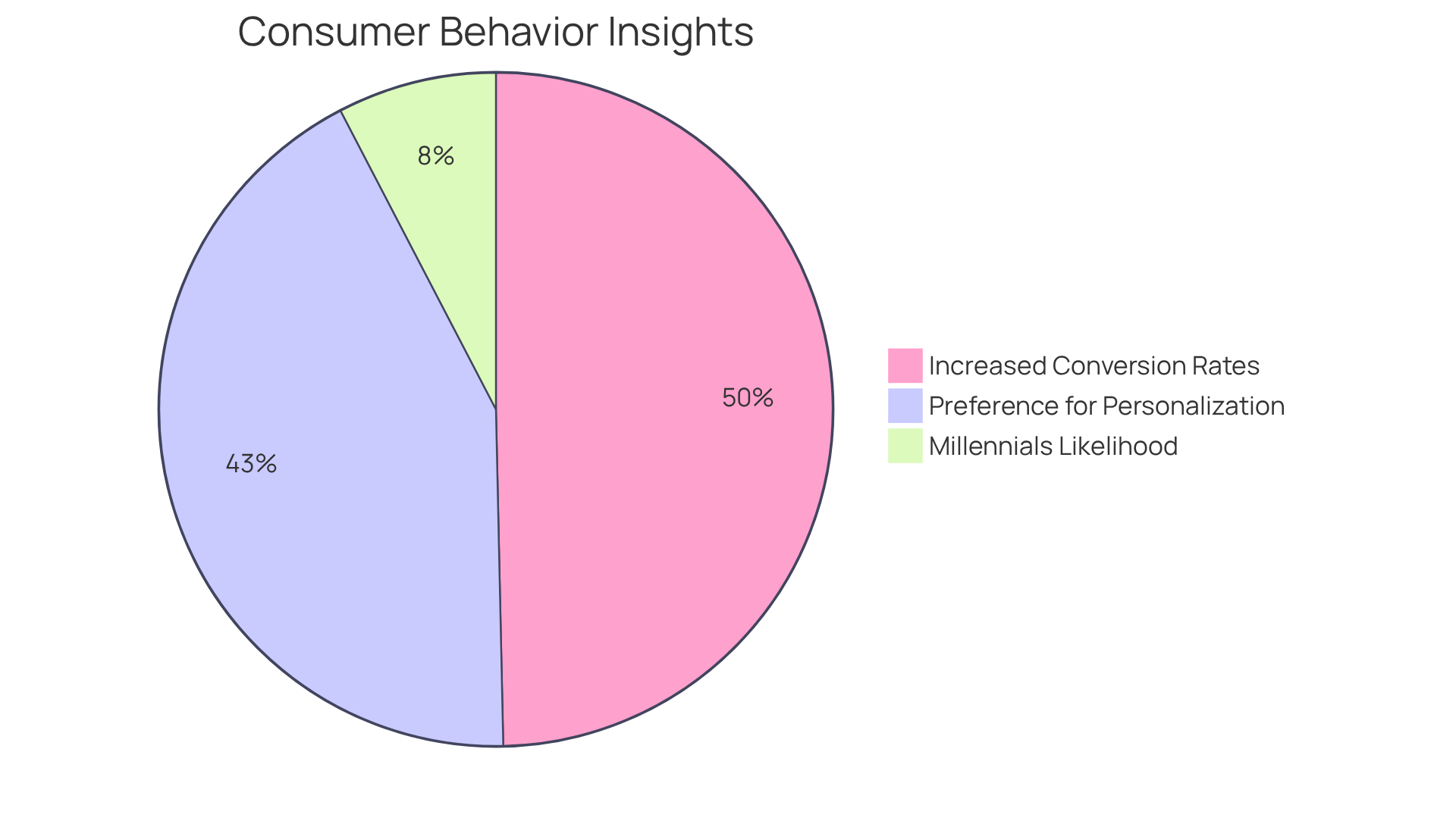
Traffic Sources: Identify Where Your Unique Visitors Come From
Examining traffic sources is crucial for DTC companies aiming to pinpoint which channels effectively attract Google Analytics unique visitors to their websites. Google Analytics categorizes traffic into several key channels:
- Direct
- Organic
- Referral
- Paid
- Social
This categorization empowers companies to evaluate the effectiveness of each channel, revealing insights into user behavior and engagement. For instance, organic traffic, arising from unpaid search results, often signifies robust SEO performance and content quality, whereas paid traffic can illuminate the success of advertising campaigns.
Current trends indicate that a significant portion of consumers—approximately 81%—is expected to make at least one DTC purchase in the next five years, with 25% of US consumers integrating DTC purchases into their regular shopping habits. This emphasizes the necessity of optimizing traffic sources. By leveraging this data, companies can make informed strategic adjustments to their marketing efforts, ensuring that resources are allocated to the most effective channels. For example, if referral traffic is underperforming, companies might investigate partnerships or influencer collaborations to enhance visibility and authority.
Moreover, understanding how traffic sources impact Google Analytics unique visitors enables DTC companies to refine their marketing strategies. By consistently monitoring and analyzing traffic data, including the employment of UTM parameters for tracking, companies can identify high-performing channels and optimize those that are underperforming, ultimately driving higher conversion rates and enhancing overall profitability. This proactive approach to examining traffic sources not only boosts marketing effectiveness but also equips companies to adapt to the evolving e-commerce landscape.
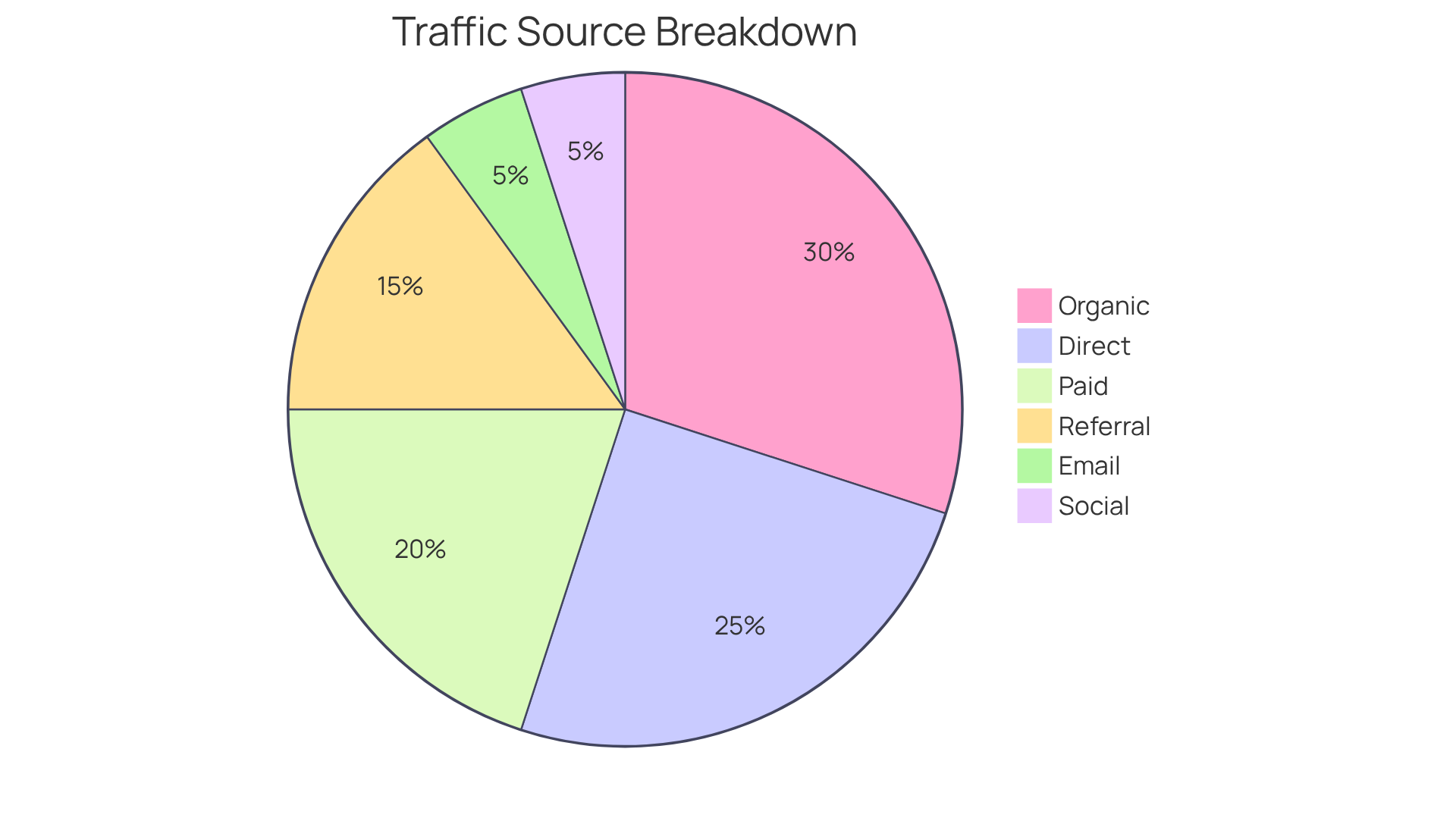
User Behavior: Analyze How Unique Visitors Engage with Your Site
User behavior metrics—such as page views, clicks, and navigation paths—are crucial for comprehending how individual users engage with a website. By leveraging Google Analytics unique visitors, DTC companies can meticulously track these interactions, uncovering patterns that reveal user preferences and pain points. For instance, the average page views per distinct visitor can indicate content effectiveness, while metrics like session duration and engagement levels provide insights into user retention and satisfaction. A session is classified as 'engaged' if it lasts longer than 10 seconds, a second page is visited, or a key event (conversion) is recorded, which is essential for understanding user engagement levels.
Analyzing user engagement through Google Analytics allows companies to determine the pages that attract the most Google Analytics unique visitors and identify where users typically exit. This data is invaluable for optimizing website design and content, ensuring alignment with user expectations and enhancing the overall experience. Effective website enhancement using these engagement metrics can lead to improved conversion figures, as companies can tailor their strategies to meet the specific needs of their audience. By implementing thorough testing and a comprehensive approach to Conversion Rate Optimization (CRO), which has demonstrated high ROI, DTC companies can ensure that their paid advertisements and landing pages are seamlessly coordinated, facilitating substantial growth and increased conversions.
Furthermore, understanding user behavior through detailed reports, such as the Landing Pages Report—which provides insights into conversion rates, session duration, and average engagement time per session—and the Path Exploration report, which highlights user navigation and drop-off points, empowers DTC companies to refine their marketing strategies by leveraging data on Google Analytics unique visitors. By monitoring user engagement and preferences, brands can craft more personalized experiences that resonate with their audience, ultimately driving higher conversions and fostering long-term customer loyalty. This comprehensive approach not only enhances user satisfaction but also maximizes profitability through effective conversion methods.

New vs. Returning Visitors: Gauge Customer Loyalty and Acquisition
Monitoring the ratio of new to returning guests is crucial for gaining insights into customer loyalty and evaluating the effectiveness of acquisition strategies. Google Analytics empowers DTC companies to meticulously analyze metrics such as google analytics unique visitors, providing a clear understanding of their capabilities in retaining customers and attracting new ones. This critical information not only informs targeted marketing campaigns but also enhances customer loyalty and drives repeat purchases, ultimately fostering a sustainable business model.

Session Duration: Measure Engagement of Unique Visitors
Session duration stands as a pivotal metric that gauges the time distinct users spend on a website, offering invaluable insights into their engagement levels. Google Analytics adeptly monitors this metric, empowering DTC companies to evaluate the effectiveness of their content on users. For instance, the average session duration for B2C eCommerce sites typically hovers around 92 seconds, a figure deemed insufficient for B2C companies, as it should ideally exceed 92.33 seconds. Furthermore, sessions surpassing 5 minutes are increasingly prevalent, with 21.4% of desktop sessions and 14.6% of mobile sessions lasting beyond this threshold, underscoring the importance of extended session durations in fostering engagement.
By scrutinizing session duration, companies can pinpoint high-performing pages and identify those that may require enhancements to sustain user interest. Implementing strategies such as:
- Integrating engaging visuals
- Segmenting text with images
- Embedding videos
can significantly elevate session duration. Research indicates that embedding videos within articles can double the average session duration, highlighting the efficacy of this method.
Moreover, comprehending the customer journey is vital for crafting content that aligns with user needs, potentially leading to longer session durations. Brands that synchronize their content with user intent frequently observe enhancements in engagement metrics, with some reporting increases of up to 20% in time spent on site. Additionally, a clean, distraction-free website design can amplify user experience and extend time spent on site. By leveraging session duration data, DTC brands can refine their content strategies, ultimately enhancing engagement and driving conversions.

Bounce Rates: Assess Landing Page Effectiveness for Unique Visitors
Bounce percentages signify the proportion of distinct users who exit a site after viewing only a single page. A high bounce frequency often signals that landing pages are not effectively engaging visitors. For DTC companies, leveraging Google Analytics is crucial to pinpoint pages with elevated bounce rates. By scrutinizing this data, companies can implement targeted strategies to enhance content relevance and user experience.
Effective landing page optimization techniques encompass:
- Improving calls to action
- Accelerating page load speed
- Ensuring that the content aligns with user expectations
Furthermore, A/B testing various elements can unveil what resonates most with the audience. Understanding and addressing bounce statistics not only aids in reducing them but also plays a pivotal role in enhancing conversions, ultimately elevating profitability for DTC companies.

Conversion Rates: Evaluate Success of Unique Visitor Engagement
Conversion figures reflect the percentage of distinct visitors who complete a desired action, such as making a purchase or subscribing to a newsletter. By leveraging Google Analytics to analyze this metric, DTC companies can assess the effectiveness of their engagement strategies. Notably, the average conversion percentage across all sectors hovers around 2.9%, with marked disparities: professional services lead at 4.6%, while B2B eCommerce lags at 1.8%. Understanding these metrics empowers companies to pinpoint effective strategies and uncover opportunities for improvement, ultimately enhancing overall performance.
Parah Group's case studies underscore the transformative impact of effective CRO strategies on DTC companies, emphasizing the importance of tailored engagement strategies in driving revenue growth. For instance, a $30M clothing label experienced a remarkable 35% increase in conversion figures following the launch of a redesigned homepage that highlighted social proof and optimized product pricing. Similarly, Grab Green, a $15M cleaning product brand, achieved a 73% boost in conversion figures by testing free shipping thresholds and introducing bundles to incentivize larger purchases. These outcomes illustrate how strategic adjustments can yield significant improvements in conversion metrics.
Moreover, effective engagement strategies can substantially elevate conversion levels; for instance, user-generated content can enhance conversions on product pages by 8.5%. By continuously monitoring conversion metrics, companies can refine their strategies, ensuring adaptability to shifting consumer behaviors and preferences. As Unbounce emphasizes, optimizing content—taking into account factors such as copy length, readability, and word choice—directly influences conversion rates. This underscores the necessity for DTC companies to prioritize content enhancement as a vital aspect of their overall CRO strategy.
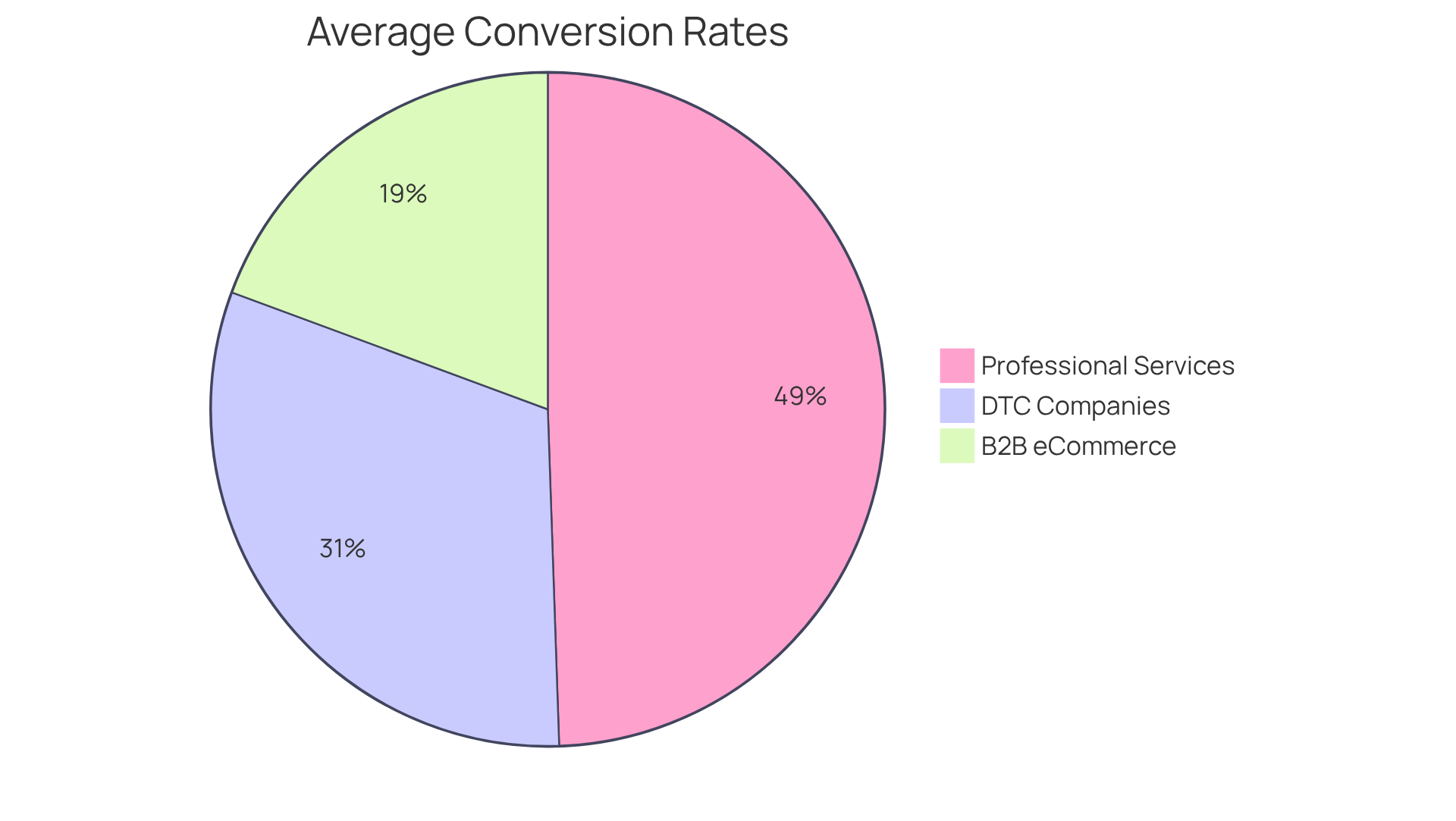
Goal Completions: Track Unique Visitor Conversions to Customers
Goal completions in Google Analytics are essential for monitoring specific actions performed by distinct individuals, such as making a purchase or submitting a contact form. By establishing and monitoring these goals, DTC companies gain valuable insights into their effectiveness in converting visitors into customers. This information not only evaluates the effectiveness of marketing efforts but also guides future strategies, allowing companies to refine their methods based on real performance metrics.
As Bob Strachan emphasizes, understanding Customer Lifetime Value (LTV) is crucial for determining how much can be spent on customer acquisition. While tracking goal completions is vital, it must be part of a broader strategy that includes monitoring other key performance indicators (KPIs) like Customer Acquisition Cost (CAC) and Average Order Value (AOV).
Moreover, awareness of the potential pitfalls of incorrect goal setup in Google Analytics, as highlighted by Josh McCoy, is essential to ensure accurate tracking and reporting.
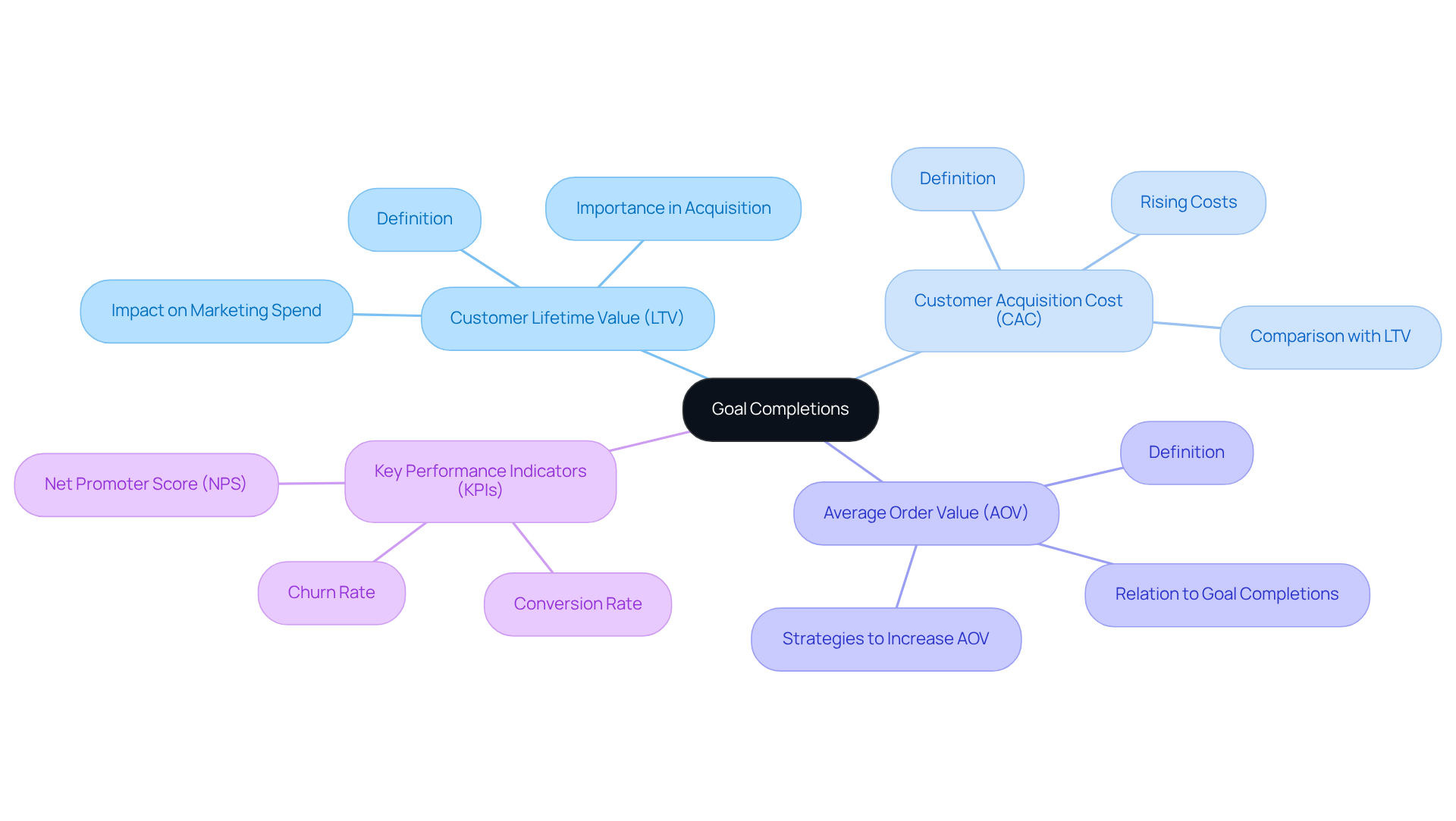
Custom Reports: Gain Insights into Unique Visitor Metrics
Generating personalized reports in Google Analytics is crucial for DTC companies aiming to focus on the Google Analytics unique visitors metrics that are most important to their business. By tailoring reports to align with specific goals and KPIs, brands can uncover deeper insights into their audience's behavior and engagement. This targeted analysis not only facilitates more strategic decision-making but also optimizes efforts, ultimately driving better results.
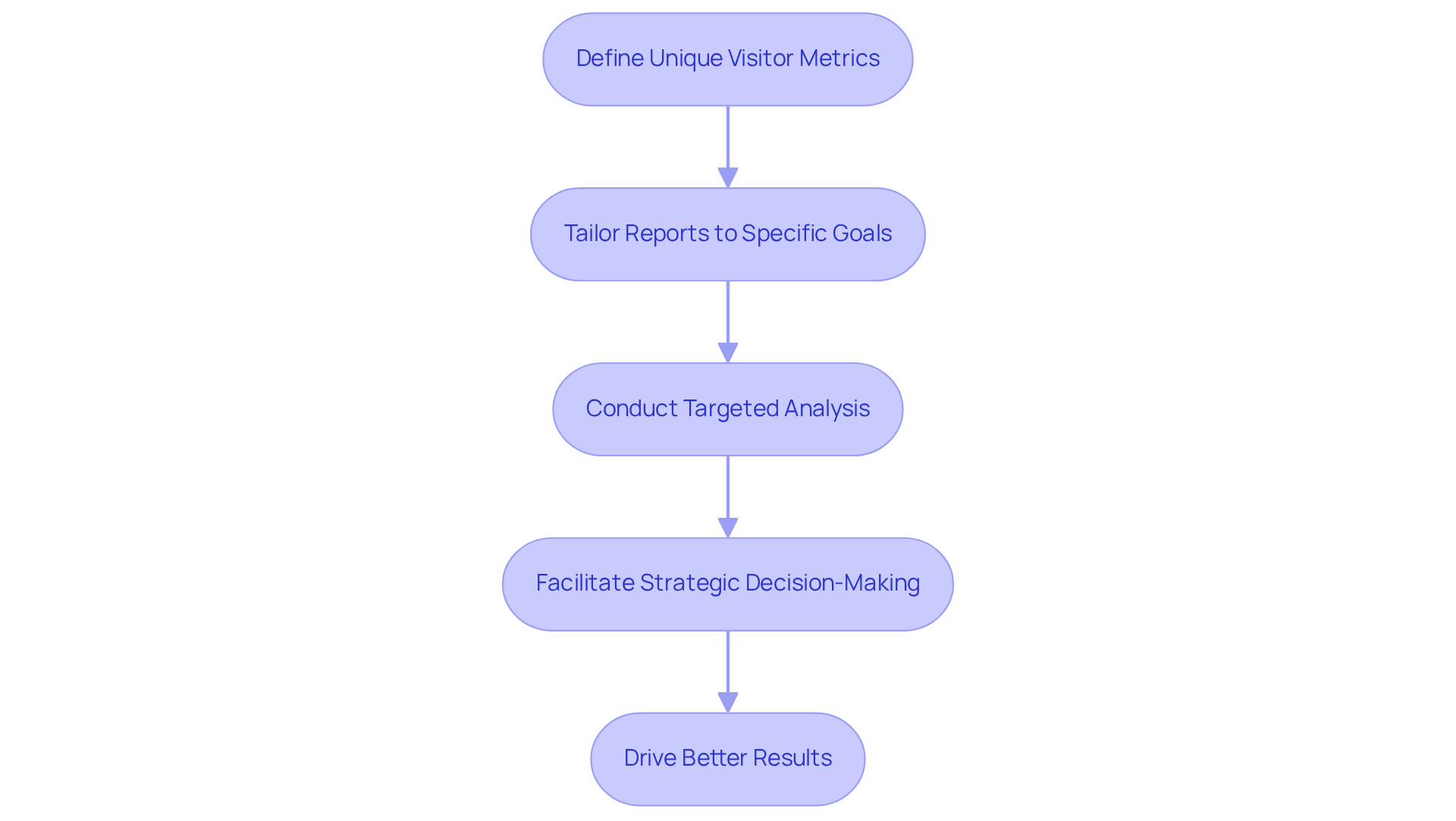
Conclusion
Tracking unique visitors through Google Analytics is essential for DTC brands that seek to refine their marketing strategies and enhance customer engagement. By leveraging unique visitor metrics, companies can gain critical insights into audience behavior, optimize their marketing efforts, and ultimately drive growth.
The article highlights key aspects of unique visitor tracking, emphasizing:
- User demographics
- Traffic sources
- User behavior analysis
- Conversion metrics
Each of these elements is pivotal in shaping a brand's marketing approach and customer retention strategies. For example, analyzing traffic sources enables companies to pinpoint the most effective channels, while understanding user behavior fosters improved website design and content strategies. Additionally, monitoring session durations and bounce rates reveals vital insights into user engagement, which is crucial for increasing conversion rates.
The importance of tracking unique visitors cannot be overstated. It empowers DTC brands to make data-driven decisions that enhance customer experiences and optimize marketing strategies. By adopting a comprehensive approach to analyzing unique visitors, brands can not only elevate their current performance but also position themselves for sustainable success in a competitive digital landscape. Embracing these best practices ensures that companies remain agile and responsive to the evolving needs of their audience, ultimately fostering stronger connections and driving long-term profitability.
Frequently Asked Questions
Why is monitoring unique visitors important for DTC companies?
Monitoring unique visitors is essential for DTC companies to enhance their marketing strategies and increase audience engagement, leading to informed decision-making and improved marketing efficiency.
How can Google Analytics help in tracking unique visitors?
Google Analytics allows brands to implement tailored tracking strategies by configuring unique participant tracking parameters and ensuring consistent data collection, which helps in understanding audience dynamics.
What are the benefits of using Google Analytics for tracking distinct users?
Businesses that effectively utilize Google Analytics for tracking unique visitors often experience substantial improvements in marketing efficiency and resource allocation, as well as a better understanding of audience engagement.
How can companies analyze unique visitors in Google Analytics 4 (GA4)?
Companies can gauge unique visitors by navigating to the 'Lifecycle > Engagement > Pages and screens' section and reviewing the 'Users' metric in Google Analytics 4.
What challenges might businesses face when monitoring distinct users?
Potential challenges include cookie blocking and browser caching, which can affect the accuracy of data collected on unique visitors.
Why is understanding user demographics important for DTC brands?
Tracking user demographics such as age, gender, and location is crucial for creating personalized marketing campaigns that resonate with specific audience segments, driving higher engagement and conversion rates.
What impact does personalization have on consumer purchasing behavior?
80% of consumers are more likely to purchase from a company that offers personalization, and 93% of organizations report increased conversion rates after implementing personalized strategies.
Can you provide examples of successful case studies related to understanding unique visitors?
Parah Group's collaboration with a $30M clothing line led to a 35% increase in conversion rates, and a $15M cleaning product label saw an 80% rise in average order value through strategic bundling and pricing tests.
How do traffic sources influence unique visitors for DTC companies?
Examining traffic sources helps DTC companies identify which channels effectively attract unique visitors, allowing them to evaluate and optimize their marketing strategies based on user behavior and engagement.
What are the main categories of traffic sources in Google Analytics?
Traffic sources are categorized into Direct, Organic, Referral, Paid, Email, and Social, each providing insights into the effectiveness of different marketing channels.
How can companies improve underperforming traffic sources?
Companies can investigate partnerships or influencer collaborations to enhance visibility and authority if referral traffic is underperforming, and they can make informed strategic adjustments based on traffic data analysis.
FAQs











